Lab Safety Tips and Best Practices
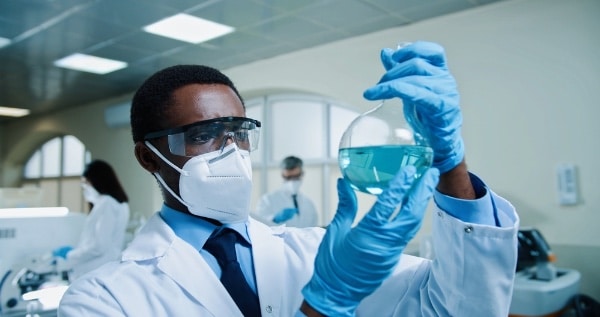
Experiments are key to advancing research and education, and practicing proper lab safety procedures is a non-negotiable aspect of working in a lab setting. That’s why we put together this list of lab safety tips.
Effective lab studies depend on the reliable ability of researchers to abide by preset guidelines and safety rules so that common potential hazards can be promptly identified and accidents can be avoided.
When all personnel is fully educated on the most reliable controls to mitigate risks in the lab, they can practice unwavering vigilance to protect the health and safety of themselves and others and preserve the integrity of their research.
With strict safety protocols and the proper ongoing use of the necessary personal protective equipment (PPE), dangerous hazards in the laboratory can be appropriately managed to facilitate the most beneficial outcomes for all.
Let’s take a closer look at laboratory safety, from basic rules and potential warning signs to using lab equipment correctly, so experimenters can remain proactive in constantly reducing the chance of exposure to the common dangers of lab experiments to protect themselves and their colleagues. We also have a full set of lab safety training videos to check out.
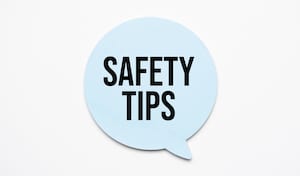
Top 10 General Lab Safety Tips
People ask, “What are the ten laboratory safety tips” – but there’s no set limit on safe practices. Although OSHA has put out a guide on Laboratory Safety, there is no limit to the number of safety protocols that should be in place.
Below are some essential safety tips to provide a starting point for researchers to understand better the minimum requirements for supporting lab safety.
These safety rules aim to reduce dangerous exposure risks while conducting laboratory experiments, but it’s important to note that this list is not comprehensive. When sharing these tips, you want to stress to your employees that lab safety is important to the well-being of the lab, and the workers.
The following lab safety protocols were designed to avoid the most common causes of accidents in the lab.
1. No food or drinks allowed in the lab
Eating, drinking, or chewing gum in the laboratory is unprofessional, distracting, and unsafe. Eating or drinking in lab areas increases personal exposure to hazardous materials and hazards.
It’s not safe to eat around chemicals and toxic substances, and laboratory glassware should never be used to handle food or drinks as they may be contaminated.
Moreover, introducing food to the laboratory presents avoidable opportunities for sample contamination and the spread of bacteria-causing germs. Thus, most professional lab safety rules dictate that food is prohibited inside laboratories or refrigerators.

2. Wear appropriate attire while in the lab
Loose clothing should be avoided, long hair should be tied back, and long pants should cover the legs completely with closed-toe shoes; wearing shorts is inappropriate.
Dangling jewelry poses safety hazards and is therefore prohibited. Contact lenses can increase the potential for eye exposure or injury, so their use is discouraged, even with safety glasses.
Researchers must often use or avoid certain clothing items to protect themselves and others. For example, if flammable materials are being handled, don’t wear synthetic fibers, as natural clothing is safer.
3. Use the right PPE for the lab environment
What is the #1 lab safety rule? PPE is a strong contender.
PPE refers to protective gear designed to keep people safe while working with hazardous waste and harmful chemicals common in laboratories.
Based on the type of hazardous materials being handled, varying levels of PPE will be required for each experiment. To keep researchers safe from exposure and maintain an injury-free environment, a lab coat, chemical splash goggles, gloves, and additional lab safety gear may be necessary to protect from common hazards, chemical, biological, or otherwise.
The correct safety gear will depend on the hazards being handled. If you’re unsure about what you must wear in addition to lab coats and safety glasses, ask a superior for guidance.
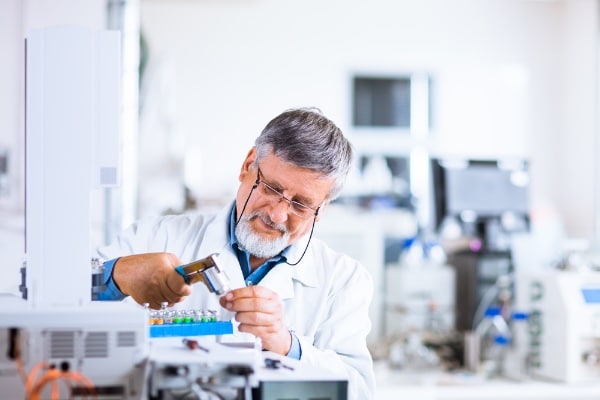
4. Assess risks when determining PPE
Eye protection is essential for most laboratory experiments. Wearing safety goggles while performing tasks like pouring chemicals with unknown toxicity levels protects against the heightened possibility of injury.
An experiment can expose researchers to dangerous objects like biological cultures, broken glass, and chemical spills. Refer to the lab’s own proper procedures and become familiar with the layout to be prepared to respond in the event of bodily contamination.
5. Handle lab safety equipment carefully
Following common lab safety rules and using proper PPE such as safety goggles, gloves, and coats is essential to keeping the environment and its inhabitants safe while handling chemicals, using Bunsen burners, etc. Safety equipment is only effective if it is used and handled correctly.
Always learn to use each item properly and be cautious while handling used PPE. Coats and aprons may carry contaminants and chemicals, so they shouldn’t be stored in break rooms or offices. Practice caution while removing gloves and safety glasses worn while handling hazardous chemicals.
It’s important to locate the various emergency response tools and their locations, such as the laboratory spill kit, safety shower, eyewash stations, first aid kit, and AED. Note the evacuation route, placement of the fire pull station, extinguisher, and the nearest phone.
6. Observe professional conduct while in the laboratory
Experimenting requires an ongoing level of focus and maturity. This is at the core of protecting laboratory users from common risks and hazards.
Given the serious nature of lab work, it’s important to adhere to the following conduct guidelines:
- Wash hands with soap and running water, and moisturize regularly to avoid dry, cracked skin.
- Do not mix non-lab items with laboratory equipment. Leave all unnecessary objects outside the lab.
- Stay focused with limited distractions. Do not use cell phones or headphones while working in the laboratory.
- Never apply cosmetics in the lab or around experiment equipment. Behaviors that involve touching your face greatly increase the risk of exposure.
- Act responsibly. No practical jokes or horseplay are allowed at any time. Immature behavior puts everyone in danger.
- Avoid working alone in the lab. Approved experiments should be performed with the necessary support during normal working hours.
Each lab will have its own set of standard operating procedures and laboratory safety rules that will likely expand upon these basic directions. They might even have their own lab-specific lab safety tips.
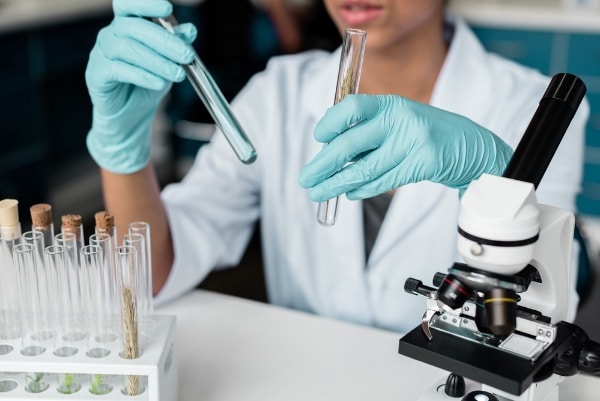
7. Ensure researchers understand the emergency response and prevention measures
Researchers need to know how to recognize and resolve potential hazards immediately and effectively.
Establishing emergency protocols is integral to confidently and safely performing routine operations. All personnel must be adequately prepared with comprehensive training for working with chemicals and responding to emergencies, including evacuation routes.
Observe all posted labels and the established permissible exposure limit (PEL) and threshold limit values (TLV). Contact emergency services immediately if they’re ever at risk of being exceeded. If your eyes are ever exposed to a chemical splash, wash them with running water for 15 minutes, then seek medical attention.
Routinely perform complete inspections, use proper PPE, and correct chemical containers, cabinets, and cans. Employ safe experiment practices at all times, and ask the lab supervisor if you’re ever unsure about any lab safety procedures.
8. Use lab equipment correctly
Safe conduct and accident prevention depend greatly on being fully aware of properly using and interacting with all spaces, tools, and machinery. For example, using mouth suction to fill a pipette is dangerous and unacceptable. It’s also not permitted to taste chemicals or even smell them directly.
Ensure all experimenters can access the lab’s safety data sheets and chemical inventory list. Refer to the lab safety manual for lab-specific procedures. If you’re ever in doubt about how to properly interact with the materials and equipment being used in the lab, inform the onsite supervisor.
9. Use containers, storage, and waste facilities appropriately
Using proper containers in the lab is a must, as failure to securely store a chemical or use appropriate reagent bottles can result in damaged glassware, broken or compromised containers, and spilled hazardous supplies.
Acids, caustics, and other hazardous chemical materials should be stored in designated cabinets.
Be mindful of metal and plastic linings that could potentially react with vapors. Properly store flammable chemical liquids in cabinets equipped with fire-rated lining, and never use cold rooms to store flammables.
Avoid leaving containers open; never pour chemicals or waste down sinks or sewer drains. Lab waste needs to be stored incorrectly lined containers with non-reactive material. Sink traps should be kept filled, so run water down the drains at least once a month. This includes floor drains and cup sink traps.
A properly functioning fume hood is key to reducing the potential for exposure, but it should never be used to evaporate volatile solvents.
Don’t ever use a chemical fume hood for waste disposal. Fume hoods are designed for ventilation during chemical manipulations, but the fume hood is not intended for container storage or pollution control. Always use the designated, labeled locations for proper waste storage and processing.
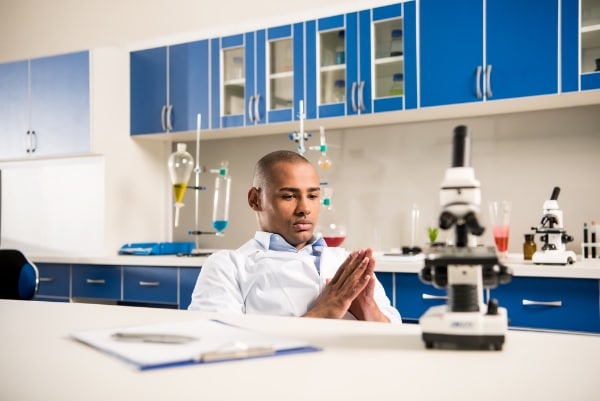
10. Inspect and label laboratory equipment regularly
Every researcher must be thoroughly trained and well-versed in the safe operation, maintenance, and inspection of the devices, materials, and machinery to be used in various experiments.
Laboratories can include environmental or interactive tools such as ventilation systems, heating and cooling devices, distillation systems, and additional specialized electrical equipment that may emit radiation, magnetic fields, radio frequencies, etc.
Adhere to instrument labels to determine when and where gloves must be worn. For instance, typing on a computer keyboard with inconsistent glove use can increase the risk of contamination from dangerous chemicals.
Additionally, using and observing accurate container labels is crucial to reducing the chance of accidental chemical exposure. Each lab’s standard operating procedures will vary, so always be cautious. Don’t hesitate to ask the lab supervisor if you ever doubt proper equipment or material handling protocols.
Final Thoughts and Lab Safety Tips Best Practices
Lab safety rules are at the core of avoiding emergencies, injuries, and dangerous exposure to hazardous waste. Labs are not uncommon to contain large quantities of chemicals and potentially hazardous equipment and materials, so safety in the lab is always a top priority.
Use PPE such as gloves, aprons, and safety glasses for eye protection, stay familiar with tools like the first aid kit, emergency showers, and fire extinguishers, and learn to recognize the warning signs of common hazards and unsafe conditions. These practices make work safer and improve the overall validity of the research being performed in laboratories.
Lab safety is essential for preserving the experiment and everyone’s well-being. Abiding by the lab’s best practices for safety rules will reduce exposure to hazardous chemicals and help avoid accidents to promote the most effective and productive studies consistently. Share these lab safety tips with your team and reap the benefits of a safer work environment.
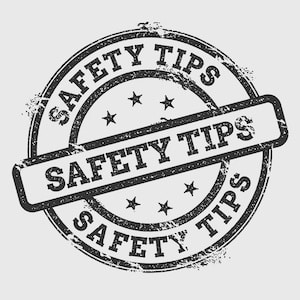
Frequently Asked Questions About Lab Safety
Chemical spills, exposure to hazardous chemicals, fires, explosions, cuts, and burns are common in a lab setting.
At a minimum, PPE such as gloves, goggles, lab coats, and closed-toe shoes are required.
First and foremost, you should always read the Safety Data Sheet or SDS for any chemical you use. The SDS will tell you how to use, store, and protect yourself from whatever chemical you use. Importantly, it will also tell you what to do in case of a chemical spill or accident.
As stated above, you should follow the spill procedures on the chemicals Safety Data Sheet. You should also have plenty of emergency spill supplies to handle the situation.
Always report the hazard to your supervisor or manager.
Always be aware of open flames, including Bunson burners, understand the chemicals you are working with to determine if they are flammable, and as always, no smoking in the lab.
No. This is important not only for your safety but also for the lab procedures that you are performing.